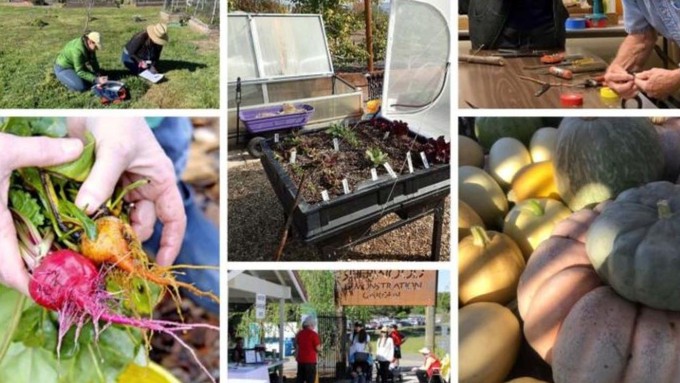
El Dorado County master gardeners offer advice for growing vegetables, fruit, flowers and more at higher elevations

Master gardeners will demonstrate all sorts of garden tasks while answering questions during Open Garden Days at Sherwood Demonstration Garden. Courtesy of UC Master Gardeners of El Dorado County
Garden in the Sierra foothills can be challenging; just ask anyone who has deer for neighbors.
Higher elevations can go from too cold to plant to too hot to grow in only a few weeks. (Sometimes, it feels overnight.)
What’s a foothill gardener to do?
Ask the UC Master Gardeners of El Dorado County. Every Friday and Saturday (weather permitting), the foothill gardening experts host Open Garden Days at Sherwood Demonstration Garden in Placerville. That includes Friday and Saturday, May 24 and 25. Admission is free.
From 9 a.m. to noon, master gardeners will be stationed in Sherwood’s demonstration stations to answer questions and tackle garden tasks. These experts teach by doing and the public is invited to watch.
“As Master Gardeners, we are committed to educating the general public on sustainable horticulture and pest management practices based on traditional, current, and evolving research,” say the hosts. “It is our goal that the Sherwood Demonstration Garden will provide the public with a hands-on, interactive experience about research-based, sustainable gardening practices specific to the west slope of El Dorado County, appropriate for all ages and cultures, and reflective of a variety of environments and gardening experiences.”
Of course, a lot of the information and experience applies to gardening throughout the foothills and greater Sacramento area. It’s also a lovely place to visit and gain inspiration.
“There are 16 individual demonstrations gardens ranging from the Shade Garden to the Rock Garden and everything in between!” say the master gardeners.
At 9 a.m. June 1, the master gardeners will host a “First Saturday Garden Tour,” with a guided walk through all 16 gardens.
Sherwood is located at 6699 Campus Dr, Placerville.
Details and directions: https://mgeldorado.ucanr.edu/.
Comments
0 comments have been posted.Sacramento Digs Gardening to your inbox.
Food in My Back Yard Series
April 1: Don't be fooled by these garden myths
March 25: Fertilizer tips: How to 'feed' your vegetables for healthy growth
March 18: Time to give vegetable seedlings some more space
March 11: Ways to win the fight against weeds
March 4: Potatoes from the garden
Feb. 25: Plant a fruit tree now -- for later
Feb. 18: How to squeeze more food into less space
Feb. 11: When to plant? Consider staggering your transplants
Feb. 4: Starting in seed starting
Sites We Like
Garden Checklist for week of March 30
Your garden doesn’t mind April showers. Get busy now to enjoy those future flowers.
* Get ready to swing into action in the vegetable garden. As nights warm up over 50 degrees, start setting out tomato, pepper and eggplant transplants.
* From seed, plant beans, beets, cantaloupes, carrots, corn, cucumbers, melons, pumpkins, radishes and squash. (Soak beet seeds overnight in water for better germination,)
* Plant onion sets.
* In the flower garden, plant seeds for asters, cosmos, celosia, marigolds, salvia, sunflowers and zinnias.
* Transplant petunias, zinnias, geraniums and other summer bloomers.
* Plant perennials and dahlia tubers for summer bloom.
* Transplant lettuce and cabbage seedlings.
* April is the last chance to plant citrus trees such as dwarf orange, lemon and kumquat. These trees also look good in landscaping and provide fresh fruit in winter.
* Smell orange blossoms? Feed citrus trees with a low dose of balanced fertilizer (such as 10-10-10) during bloom to help set fruit. Keep an eye out for ants.
* Apply slow-release fertilizer to the lawn.